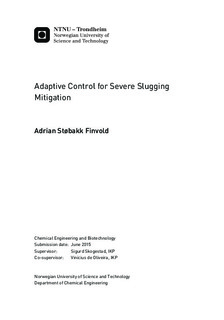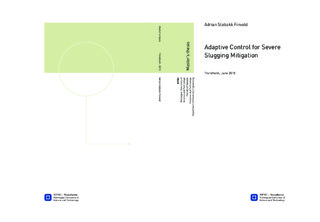| dc.description.abstract | Offshore production facilities using pipeline-riser systems are experiencing terrain-induced cyclic flow instability due to its pipeline configuration and multiphased flow. The cyclic flow instability has been referred to as severe slugging. Anti-slug control using the top-side choke valve is time-variant and open-loop unstable in multiphased flow. The control systems available today are not robust and tend to become unstable over time, as a result of inflow disturbances or plant dynamic changes.
This study investigates adaptive controller aiming to increase the robustness and restore the closed-loop performance while operating under unknown uncertainties, and thus drive the system towards a higher production rate.
Three types of adaptive systems was evaluated in order to increase the robustness of already existing optimal anti-slug control system. One self-tuning approach, and two Model reference adaptive controllers (MRACs) - with increasing complexity was investigated. A comparison of an optimal tuned Proportional-Integral-Derivative-Filter (PIDF) controller to Linear-Quadratic-Regulator followed by Loop-Transfer Recovery without adaptation was also investigated.
There was a clear difference between self-tuning and the adaptive systems, in which a scalar reference model improved the robustness and outperformed the other adaptive systems. A self-tuning system was based upon updating the controller using the slope after system excitation, along with a desired closed-loop constant. The main drawback of self-tuning was that a miscalculation would result in instability with no point of return. A more complex observer-like reference model adaptive system was not efficient enough using only one measurement. This may be due to the significant measurement noise, which alters the error between the observing model and the actual process. The robustness, performance and stability margins had minor differences in comparison to an optimal tuned PIDF and Linear-Quadratic-Gaussian/Loop-Transfer Recovery. | |

